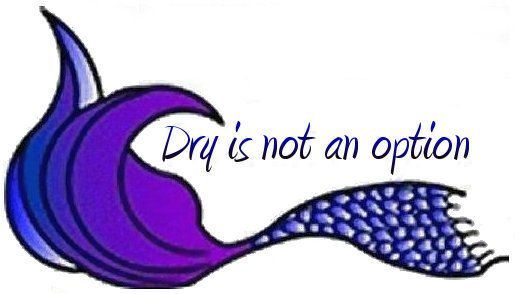Just in case you ever wondered how all that movement in the water worked, what do I really mean by "getting your sea-legs" and if all the water-based exercise classes places a greater physical demand on the instructor (aka - me) I thought I would share this article:
***
From an Instructor's point of view:
An instructor’s level of energy expenditure in a water-based environment will certainly depend on how long they are actually instructing while in the water. Chlorinated water, water cleanliness, sunlight (if outdoors) all provide an additional strain on the instructor over land-based indoor exercise classes. The chlorinated atmosphere can produce an additional strain on the respiratory system and vocal chords of the instructor. This is especially true of the instructor is doing many more classes a week than one would normally attend if just a participant. Since everyone's sensitivities and stamina is different, it will be up to the instructor to determine the maximum number of classes to teach per week to avoid over training and environmentally induced abuse. (Ahhhh, so that’s why I had to let my Friday class go starting with the 2012 season...)
What makes water exercise different:
(a little hydrodynamics)
The intensity of a particular movement in which air is the only resistance will be less as opposed the same movement through the much denser medium of water.
Water provides a type of resistance known as Isokinetic resistance. Isokinetic exercise is defined as changes in muscle length and tension. Most of the exercise that we encounter in the gym is Isotonic (i.e. changes in muscle length with constant tension where the weight resistance doesn't change). (I always get these two mixed up! )
In water, the exercise can be Isotonic or Isokinetic. Changes of speed, direction and depth changes and the corresponding resistance effects manage to provide both Isotonic as well as Isokinetic exercise water-based programs.
As an example, if we move an arm at a constant speed, the tension remains constant (resistance of the water). However, if we change the rate of speed (acceleration) of the arm movement from slower to faster, we also change the tension (water resistance).
This change in resistance is not only dependent on speed through the water but on surface area of the part moving through the water. Wearing webbed gloves or holding foam dumbbells will also increase the standing resistance; while changing the rate of speed will change the moving resistance.
Additional resistance can be achieved using a downward movement of foam devices, which contain air. This air is directly acted on by the increased water pressure as the item moving deeper into the water.
For instance: An item 2” below the surface contains the weight of only 2” of water above it; while an item 2’ below the surface experiences the weight of 2’ of water pressing on it from above. Divers are subjected to much more extreme pressures by having hundreds of feet of water pressing down and all around their body at those depths. Again, it's just not quite as noticeable in a pool, but the forces are the same.
What it boils down to is that water-based exercise programs can provide a greater variance of exercise techniques than land-based exercises when properly utilized.
Moving through the water: (aka Getting your Sea Legs)
Just as in land-based exercises, it is important to maintain proper form, which includes posture to avoid injury as well as direct the physical movement to the intended muscle systems.
Due to the changes in balance because of the forces of the water, care must be taken to avoid hyper-extension of the neck, back and knees to avoid excess pressure on the joints. Our body is used to reacting with gravity in order to maintain balance and coordination. In water, the effects of gravity are reduced, which alters the interpretation of bodily movements and position.
This positional mechanism (for balance) is called Kinesthesia. In addition to balance, Kinesthesia is defined as our sensation of positional movement.
Your body has another feedback mechanism (PNF) that provides muscle position and balance information.
An inner ear infection from a common cold might affect our PNF, but not our Kinesthesia. In other words, we might still be able to walk, but not with our eyes closed since our PNF has been degraded.
Both of these feedback mechanisms are dependent on gravity and weight sensations; which are affected by water suspension.
It is necessary to perform balanced and counter-balanced movements. Again, physics plays an important role in water dynamics. With a nod to Newton, every movement results in an equal and opposite movement and is particularly true in when an object or person is suspended in water. Without
the full effects of gravity (weight), a backward thrust of a leg will propel a body forward. This works well for swimmers.
Care must be taken to counter balance movements to maintain proper balance and alignment. Choose movements based on the reactionary force that will be exhibited in the water and the subsequent effects on balance. (there is a method to my madness!)
As in land-based exercise programs, the frequency, intensity and duration of the workout will have a direct influence on the derived cardiovascular benefits. Intensity can be varied by increasing or decreasing the speed of a movement or the range of motion or the surface area of the body part.
***
Some of it was a little technical, I admit, but if you read it bit by bit and think about it, I hope you will gain a better understanding of just what it is we are doing when we exercise in the pool. Pretty amazing stuff!
Next post I'll talk about the actual environment, water temperature, depth. etc.
I hope to have the registration information for the summer classes soon! I'll keep you posted!
